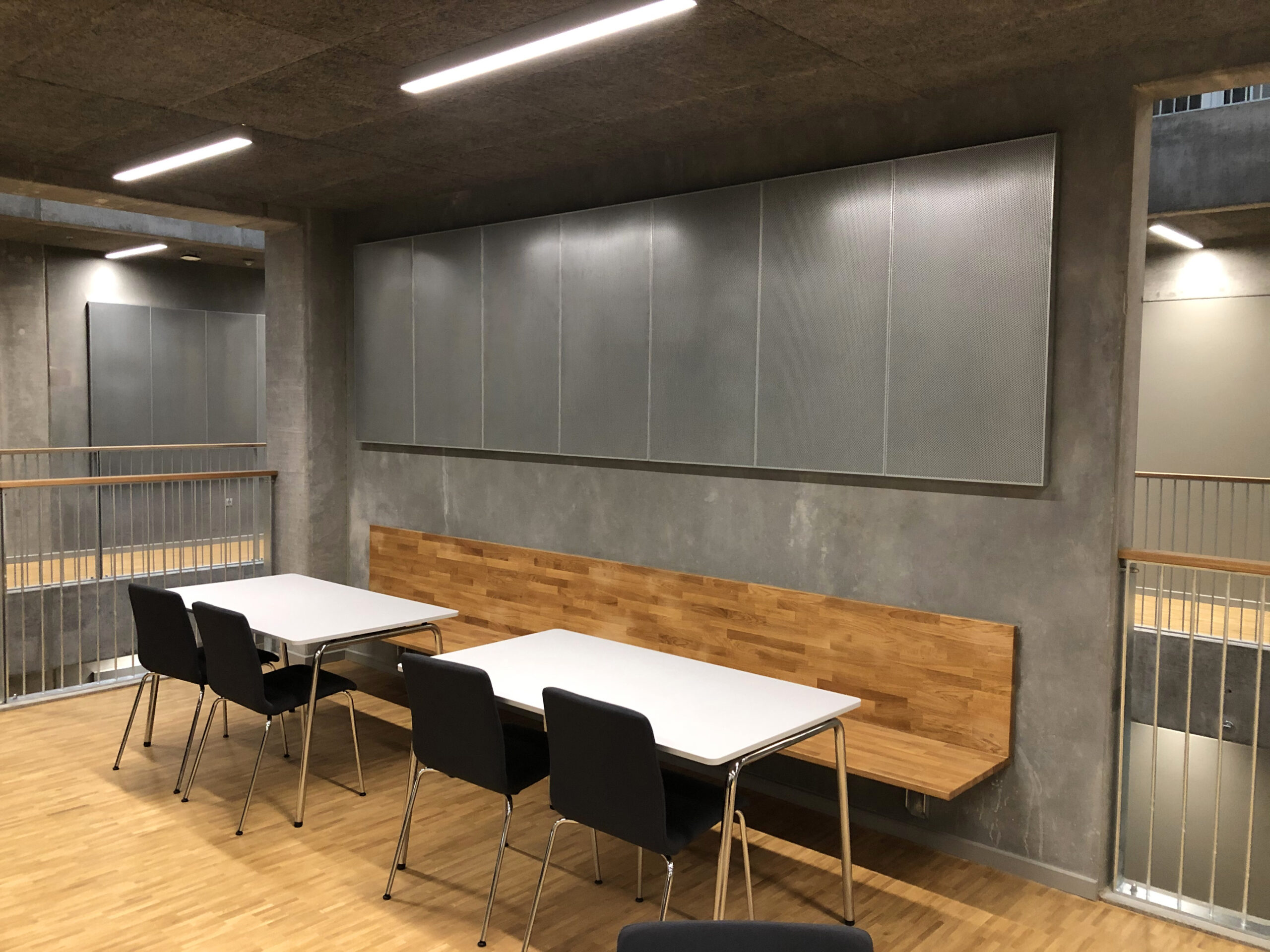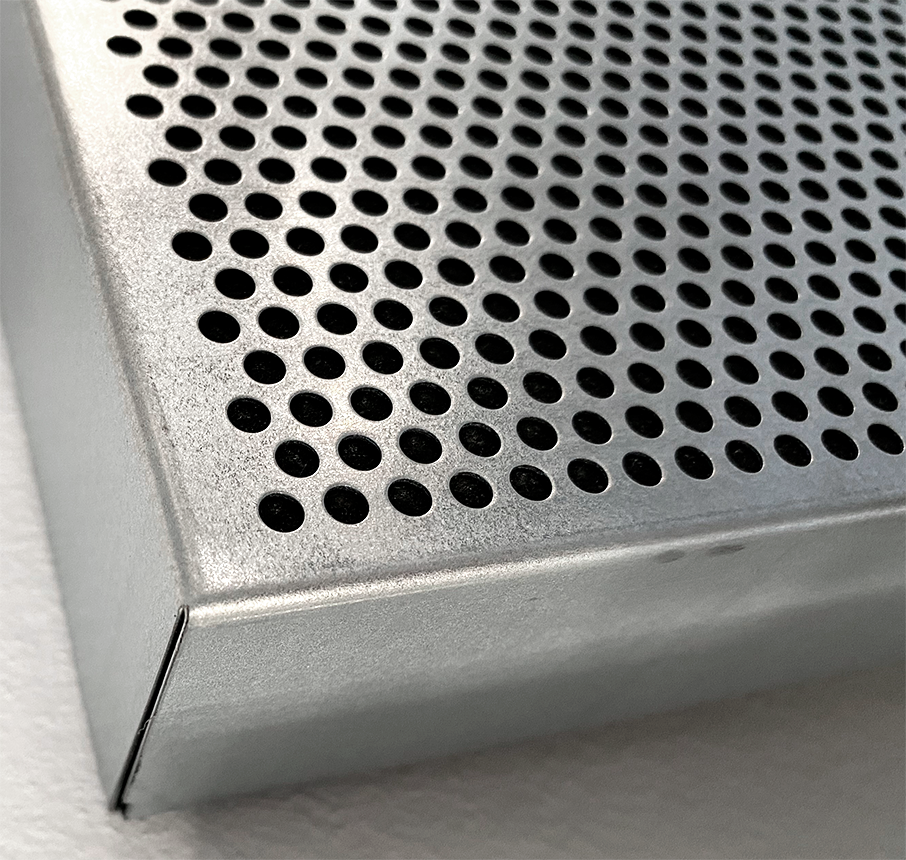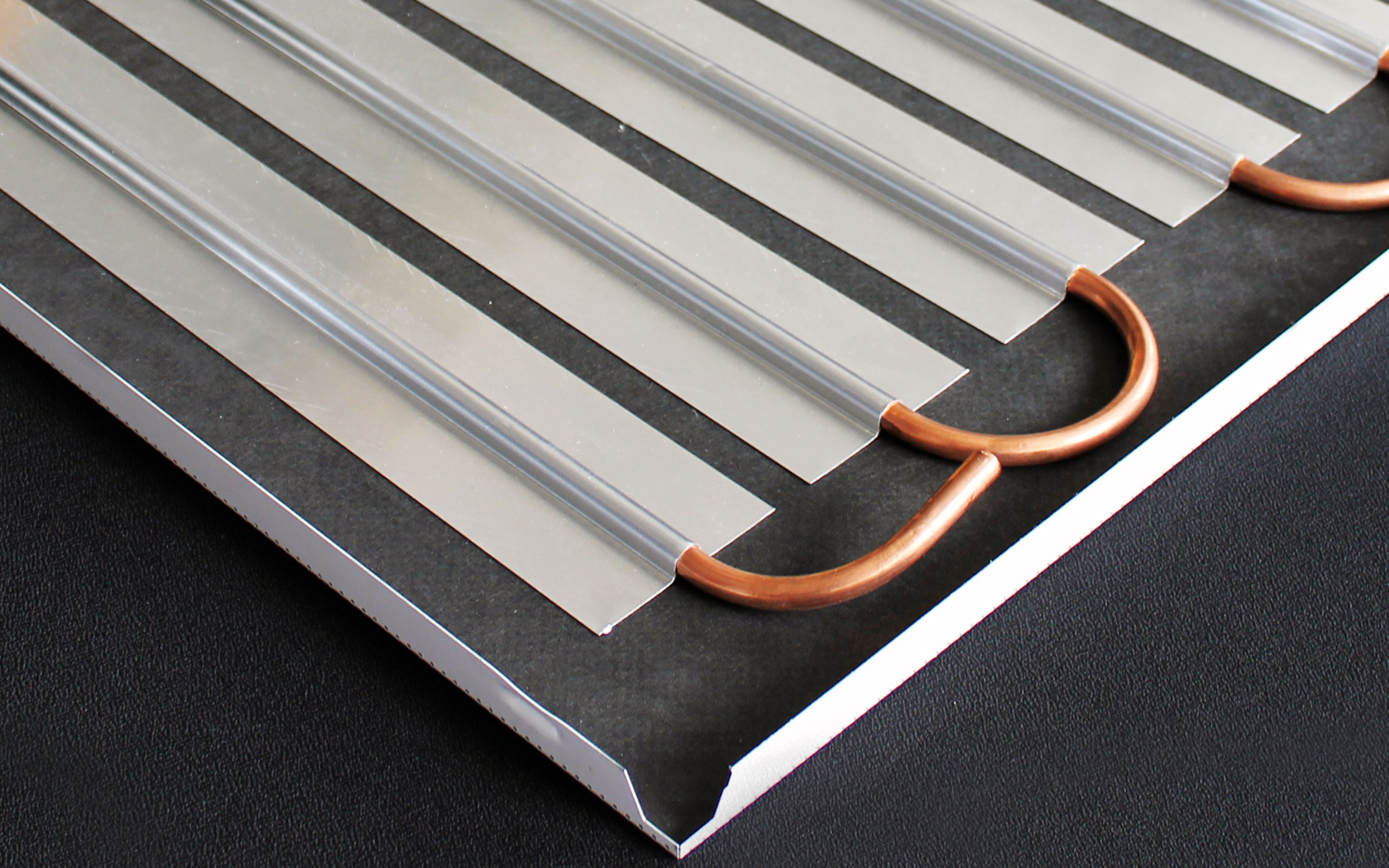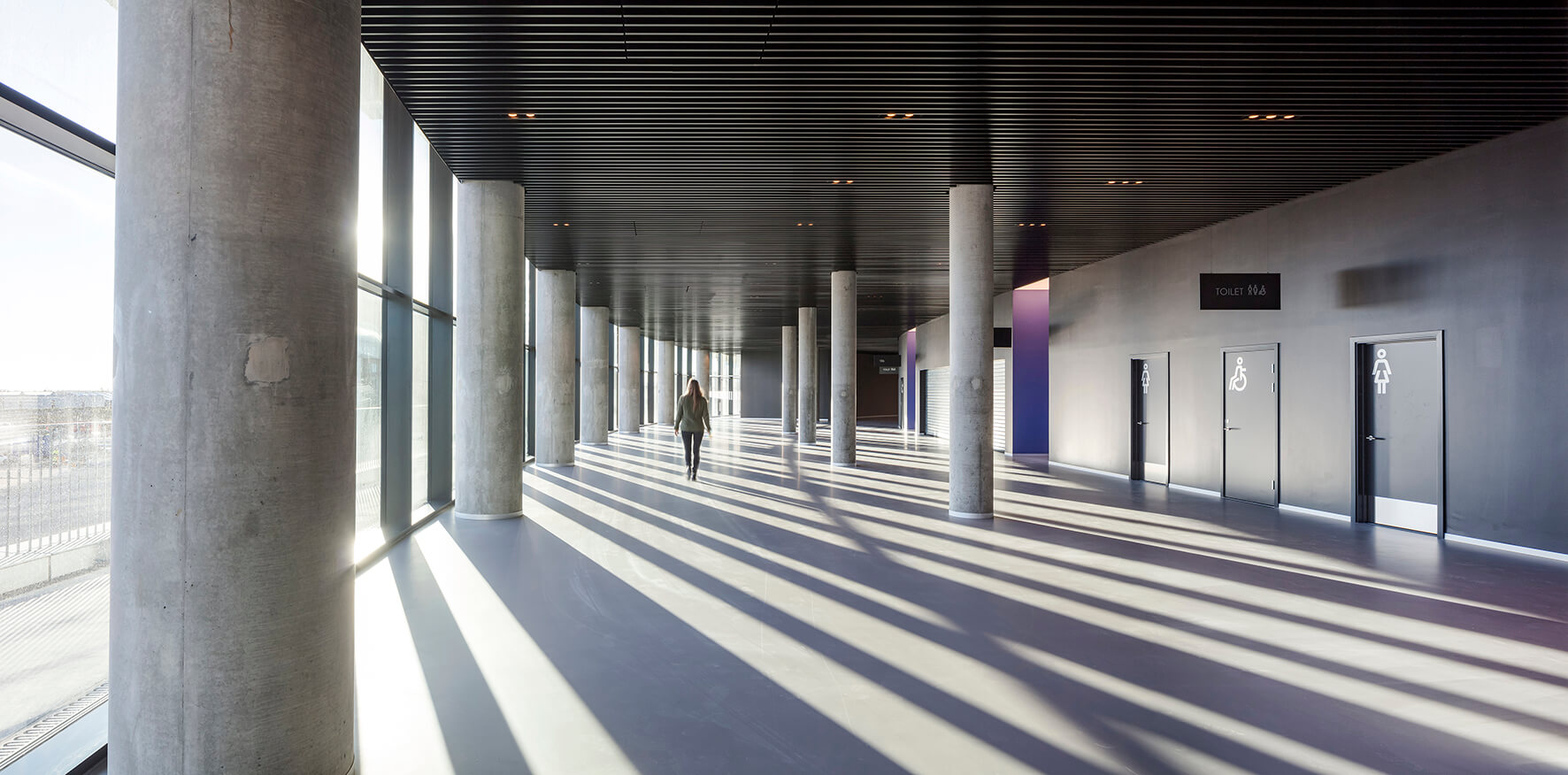How to improve the acoustics

Improvement of the acoustics
Even if we do not notice it in our everyday life, acoustics are an important factor for our general well-being and health. Therefore, it is significant to assess whether the acoustics are optimal, no matter if it is in an open-plan office, meeting room, classroom, or any other room.
Three ways to better the acoustics
When talking about “bad” acoustics, it is usually caused by a long reverberation time, due to hard, and sound-reflecting surfaces in the room. When the sound hits the surfaces, it will be reflected back and forth between the hard surfaces in the room, why we will hear the echo and discover the bad acoustics.
To get rid of this problem it is crucial to add sound-absorbing elements or materials to the room. In this case the ceiling and walls are ideal to implement in the acoustic upgrade, while it is also often on these surfaces, you will get the best results.
1: optimise the acoustics through the ceiling
The ceiling is a big surface, which, specifically when talking about a suspended ceiling, is close to the sound source e.g., people who are talking. Therefore, this is an excellent surface to implement sound-absorbing elements on.
When talking about ceilings there are three possibilities:
A new comprehensive acoustic ceiling
If the current ceiling is not an acoustic ceiling, the whole ceiling surface is often reflecting the sound waves, which creates a long reverberation time and contributes to the undesireable acoustical conditions.
A new acoustic ceiling is an extensive cost-intensive solution when talking about adjustment to an existing building. However, this is where you will get the best results.
Read more about our different ceiling solutions.
Upgrade your current acoustic ceiling
If you already have an acoustic ceiling, but it does not live up to the present acoustical requirements, it can be ideal to examine whether it is possible to make acoustical improvements with the existing ceiling.
Such improvements can be e.g. be done by placing extra sound-absorbing materials in the space above the acoustic ceiling. However, it is important to keep part of the space, as this is essential when lowering the reverberation time in the lower frequencies.
Read more about sound absorption types and reverberation time here.
Use acoustics baffles
An acoustic baffle is a sound-absorbing element, which hangs down from the ceiling. This is especially ideal in rooms that need acoustical improvements in specific areas. This could be a meeting room, where you add an acoustic baffle over the meeting table, to make it more comfortable and easier to hear, what the other people are saying. The acoustic baffle will not only have a positive effect on the acoustics around the meeting table but also in the rest of the room.
2: use the walls to upgrade the acoustics
In situations where it is not sufficient or possible to install an acoustic ceiling, acoustic wall panels can advantageously be installed. There are many acoustic solutions for the walls, which are easy to install and at a relatively low cost.
The rule of thumb when creating optimal acoustic is that the walls of the room must be covered with sound-absorbing material corresponding to approx. 10-20% of the floor area – the actual percentage does however depend on the location of the sound absorbers, their absorption class, and the composition of the room. The walls are often close to the sound source, especially in narrow spaces, and will thus provide an improving and noticeable effect.
If you already have acoustic wall panels installed in the room, you can look at whether more wall panels should be added, possibly some with a higher absorption class. More importantly, look at whether the wall panels are located optimally in the room. To achieve the best possible effect, the wall panels must be placed relatively staggered e.g., on adjacent walls. If this is not possible because of e.g., a large window section, the wall panels are best placed opposite this sound-reflecting surface.
Read more about DAMPA® Silent Board here.
3: Furnishing
When furnishing a room it can have a positive effect on the acoustics, if you use porous materials e.g., carpets and curtains. However, the sound-absorbing effect is only a fraction of the effect achieved when using acoustic ceiling or wall panels.
Optimize continuously
Optimizing the acoustics of a room can seem like a major renovation and cost intensive. But it does not have to be. For example, sound absorbers can be added to ceilings and walls on an ongoing basis, depending on the specific needs.
The higher the sound absorption class is on each product, the fewer elements you need e.g., with wall panels in absorption class A, such as our Silent Board, you will quickly achieve results with fewer elements than if you choose wall panels with an absorption class C.
Get experienced advice
There are many parameters to consider when it comes to optimizing your acoustics. It is therefore very important that you make sure to get expert advice, so you are assured, that the solution solves your acoustics needs and to ensure that you do not end up with an incorrect placement of the wall panels or more sound-absorbing elements than you need.
To ensure that the selected acoustics elements work as intended, it is also important to choose thoroughly tested elements with the right documentation.
You are always welcome to contact us directly by email at dampa@dampa.dk or by telephone at +45 63 76 13 00 for a talk about your acoustic needs and a possible solution.
Takeaways
- There are three different options for improving acoustics: ceiling, wall, and furnishing
- The best solution depends on your current situation and needs
- You can install a brand-new acoustic ceiling or try to upgrade your current acoustic ceiling with new/extra acoustic batts.
- Installing acoustics wall panels is often the most cost-effective solution.
- If you already have acoustic wall panels, we recommend examining whether they are placed optimally
- Furnishing with porous materials such as carpets and curtains only works to a limited extent.
- The higher the acoustic class is, the fewer acoustics elements are needed
- Choose acoustic elements, which have been tested and get expert advice, so you are assured that your investment in acoustic optimization pays off.
Related articles




DO YOU WANT TO KNOW MORE?
Let our experienced team contact you to find the perfect ceiling solution for your project.